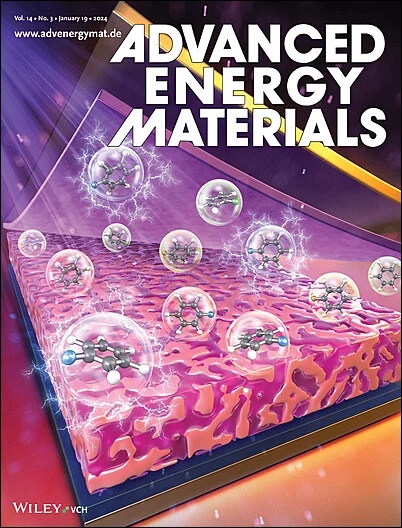利用瞬态和稳态输运测量直接评价钙钛矿太阳能电池的性能和稳定性
IF 26
1区 材料科学
Q1 CHEMISTRY, PHYSICAL
引用次数: 0
摘要
在这项研究中,电荷输运性质和钙钛矿太阳能电池(PSCs)的稳定性之间的直接关系使用时域和频域测量提供。更快的电荷载流子提取和更少的非辐射复合是稳定性和性能的关键指标,这意味着防止电荷积累和缺陷形成,从而减少降解。用2D钙钛矿基PSCs模板化稳定的纯相甲脒碘化铅(FAPbI₃,或FAPI)与传统的甲基氯化铵(MACl)稳定的FAPI基PSCs进行了比较。晶格工程、应变松弛生长在基于2D模板的FAPI器件中导致增强的电荷提取和更快的传输时间尺度,正如瞬态光电流(TPC)和强度调制光电流光谱(IMPS)测量所证实的那样。此外,瞬态光电压(TPV)和阻抗谱(IS)显示,在这些2D模板化的FAPI器件中,非辐射复合损耗降低。此外,这些技术的使用突出了它们在监测基本过程和获得关键参数以评估psc内在稳定性方面的有效性,也可以在长时间紫外线照射下使用。这种综合方法强调了将时域和频域分析相结合在理解psc的性能、耐用性和长期稳定性方面的关键作用。本文章由计算机程序翻译,如有差异,请以英文原文为准。
Direct Evaluation of Perovskite Solar Cell Performance and Stability Using Transient and Steady‐State Transport Measurements
In this study, a direct correlation between charge transport properties and the stability of perovskite solar cells (PSCs) using time‐ and frequency‐domain measurements is provided. Faster charge carrier extraction and reduced nonradiative recombination serve as key indicators of stability and performance, implying the prevention of charge accumulation and defect formation, thereby reducing degradation. Stable, phase‐pure formamidinium lead iodide (FAPbI₃, or FAPI) templated with 2D perovskite‐based PSCs is compared, against conventional methylammonium chloride (MACl)‐stabilized FAPI‐based PSCs. Lattice‐engineered, strain‐relaxed growth in 2D‐templated FAPI‐based devices leads to enhanced charge extraction and faster transport timescales, as confirmed by Transient Photocurrent (TPC) and Intensity‐Modulated Photocurrent Spectroscopy (IMPS) measurements are demonstrated. Furthermore, Transient Photovoltage (TPV) and Impedance Spectroscopy (IS) reveal reduced non‐radiative recombination losses in these 2D‐templated FAPI devices. Moreover, the use of these techniques highlights their effectiveness in monitoring fundamental processes and deriving key parameters to evaluate the intrinsic stability of PSCs, also under prolonged UV light exposure. This integrated approach underscores the critical role of combining time and frequency‐domain analyses in understanding the performance, durability, and long‐term stability of PSCs.
求助全文
通过发布文献求助,成功后即可免费获取论文全文。
去求助
来源期刊

Advanced Energy Materials
CHEMISTRY, PHYSICAL-ENERGY & FUELS
CiteScore
41.90
自引率
4.00%
发文量
889
审稿时长
1.4 months
期刊介绍:
Established in 2011, Advanced Energy Materials is an international, interdisciplinary, English-language journal that focuses on materials used in energy harvesting, conversion, and storage. It is regarded as a top-quality journal alongside Advanced Materials, Advanced Functional Materials, and Small.
With a 2022 Impact Factor of 27.8, Advanced Energy Materials is considered a prime source for the best energy-related research. The journal covers a wide range of topics in energy-related research, including organic and inorganic photovoltaics, batteries and supercapacitors, fuel cells, hydrogen generation and storage, thermoelectrics, water splitting and photocatalysis, solar fuels and thermosolar power, magnetocalorics, and piezoelectronics.
The readership of Advanced Energy Materials includes materials scientists, chemists, physicists, and engineers in both academia and industry. The journal is indexed in various databases and collections, such as Advanced Technologies & Aerospace Database, FIZ Karlsruhe, INSPEC (IET), Science Citation Index Expanded, Technology Collection, and Web of Science, among others.
 求助内容:
求助内容: 应助结果提醒方式:
应助结果提醒方式:


